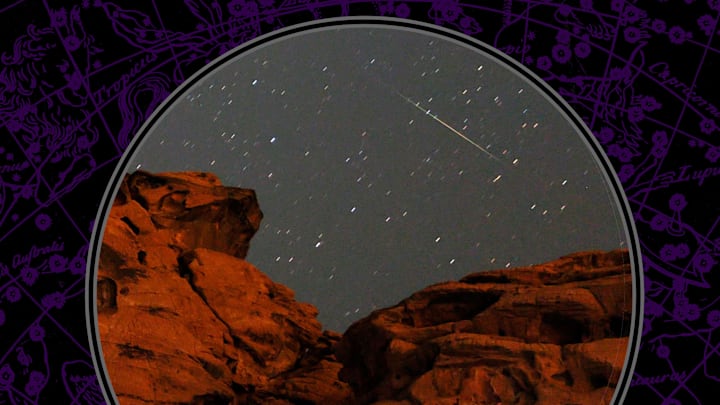On the night of Sunday, April 21 and into the early morning of April 22—Earth Day—the Lyrid meteor shower will peak over the Northern Hemisphere. Make some time for the celestial show and you’ll probably see meteors zooming across the heavens every few minutes. Here is everything you need to know about this meteor shower.
What is the Lyrid meteor shower?
Every 415.5 years, the comet Thatcher circles the sun in a highly eccentric orbit shaped almost like a cat’s eye. At its farthest from the sun, it’s billions of miles from Pluto; at its nearest, it swings between Earth and Mars. (The last time it was near Earth was in 1861, and it won’t be that close again until 2280.) That’s quite a journey, and more pressingly, quite a variation in temperature. The closer it gets to the sun, the more debris it sheds. That debris is what you’re seeing when you see a meteor shower: dust-sized particles slamming into Earth’s atmosphere at tens of thousands of miles per hour. In a competition between the two, Earth is going to win, and “shooting stars” are the result of energy released as the particles are vaporized. You can expect to see 20 meteors per hour during a Lyrid event.
The comet was first spotted on April 4, 1861, by A.E. Thatcher, an amateur skywatcher in New York City, earning him kudos from the noted astronomer Sir John Herschel. Clues to the comet’s discovery are in its astronomical designation, C/1861 G1. The C means it’s a long-period comet with an orbit of more than 200 years; G stands for the first half of April, and the 1 indicates it was the first comet discovered in that timeframe.
Sightings of the Lyrid meteor shower—named after Lyra, the constellation it appears to originate from—are much older; the first record dates to China in the 7th century BCE.
How to See the Lyrid Meteor Shower
The night of April 21, 2024, features a waxing gibbous moon that will be almost full; the full moon, dubbed the “pink moon” after the spring flowers that tend to bloom at this time, is on April 23. That means that the moon will probably reflect significant light and obscure views of the meteors.

For your best shot at witnessing the Lyrids, you’re going to need to get away from local light pollution and find truly dark skies. You should completely avoid smartphones, flashlights, car headlights, or dome lights. The goal is to let your eyes adjust totally to the darkness. Once you find your viewing area, just lay out your blanket, get comfy, look up, and wait. In an hour, you’ll be able to see the night sky with surprising clarity.
Where is the nearest dark sky to where you live? You can find out on the Dark Site Finder map.
Other Visible Bodies During the Lyrid Meteor Shower
You don’t need a telescope to see a meteor shower, but if you bring one, aim it south to find Jupiter. It’s the bright, unblinking spot in the sky. With a telescope, you should be able to make out its stripes. Those five stars surrounding it are the constellation Libra. You’ll notice also four tiny points of light nearby. Those are the Galilean moons: Io, Europa, Ganymede, and Callisto. When Galileo discovered those moons in 1610, he was able to prove the Copernican model of heliocentricity: that Earth goes around the sun.
If you miss the show this April, don’t panic—the Lyrid meteor shower will be back next year, and the year after, and so on. But if you are eager for another celestial display before then, the Eta Aquarids will be at their strongest on May 4 and 5, 2024. The night sky always delivers.
Read More Stories About Space:
A version of this story ran in 2018; it has been updated for 2024.
